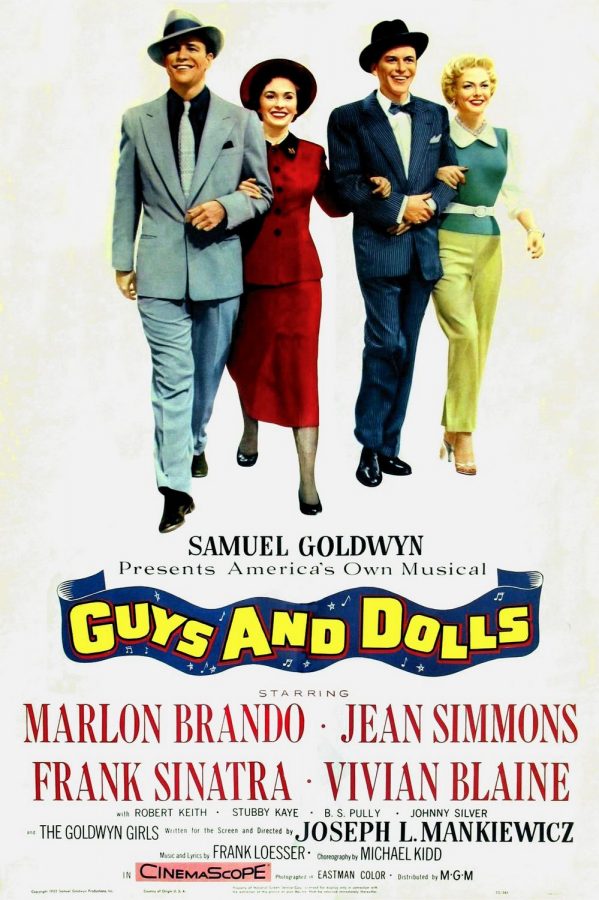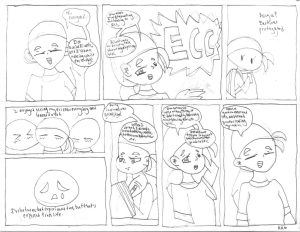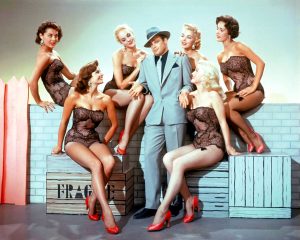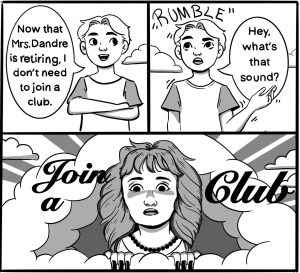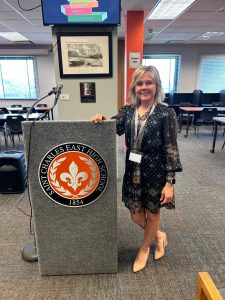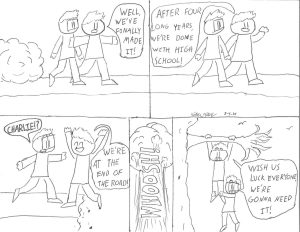Can We Revise to Make Everyone Happy?
One theater student’s answer to a few questions….
April 14, 2020
Just about everybody who was alive during 2016, caught wind of the international craze that was “Hamilton, the Musical.” Just about every theater kid can sing at least half the songs, if not all of them. And while I’d like to think that all the publicity they got was for the amazing cast, soundtrack, set, and all things of the like, a good amount of attention came from the incredibly diverse cast. The controversy was over whether it was appropriate to cast actors and actresses of color to play historically white roles. Everyone knows Lin-Manuel Miranda played Alexander Hamilton in the original cast, but other actors/actresses of color such as Leslie Odom Jr. and Alysha Deslorieux also held leading roles.
Despite there being a large amount of criticism, the majority of reactions were those of praise and admiration. The storytelling wasn’t affected by the race of those that were cast, so it shouldn’t matter. But still, a question arose, one very common at our own school: is the opposite situation appropriate? Is it okay for roles intended to be people of color to be cast with white actors? This issue came up during our own productions of “Aida” and “In the Heights.” Both shows are centered around specific cultures and peoples and unlike broadway productions, an unlimited pool of actors isn’t always available. For this reason, actors that don’t necessarily identify with the race the original character was played by are still cast.
For those that didn’t see it, one of the major conflicts in ”In the Heights” was the racism experienced by Benny at the hands of his love interest’s father, Kevin. Benny’s character is not Latino and because of that Kevin disrespects him. In the original production, Benny is played by a black actor, whereas in our production Benny was played by a white actor. In our production, the story and conflict were unaffected for the most part, so this choice should have been okay, right?
Despite this, there are still many questions that remain. Is cultural appropriation at play? Should we just avoid these types of shows altogether? Or is there some other solution or approach to presenting these classic shows?
From that second question, comes yet another issue. This springs musical was supposed to be “Guys and Dolls,” and while I was excited to see gangsters coming in on slides from the wings, the musical had to be canceled due to the COVID-19 Virus.
If you were planning on going to see it, you might be interested in the fact that there have been some changes made to the original, as with “Aida” and “In the Heights.” This time it was less about casting, and more about the show’s plot. “Guys and Dolls” was written and performed in the early 1950s and thus some outdated American social beliefs came through in that. Specifically, tones of sexism are present in the way the women are portrayed. For these reasons, some changes to the story were made to tone down these aspects. As put by Audrey Schero, a stage manager for “Guys and Dolls”, “We changed what lines said and we tried to develop the female characters more. While a lot of things are the same we didn’t want to change too much so we can keep the time period that this is set in.”. I’m sure you see where I’m going with this. Is it okay to change the musical to suit one’s beliefs, or is it just better to not do that show?
Actress Malea Kinnison shared her perspective on this, taking the side that it is best to leave the original intact. “[Guys and Dolls] was set in the 1930s where these female and male gender roles were normal. Just like in “Les Mis” when we performed in English accents, or in “In the Heights” when we did our best to represent an amazing culture; we don’t need to adjust this storyline to fit modern-day gender roles. Not because it isn’t important, but because this and every show is an art. We wouldn’t change a sculpture by Michelangelo because people dislike public nudity, that sculpture is an art and is praised, kept maintained and restored when it is necessary. Just like his sculptures, this show is how someone portrayed a story.”
With all 3 of the shows I’ve mentioned, creative liberties were taken so we could make the show work for us. But a while back, there was a show we were considering doing called “20,000 Leagues Under the Sea.” There’s a specific character in this show that is written to be of South Asian descent. This show was not written to be a high school show, so on Broadway, an actor who fit this description was cast. But the difference between this show and “In the Heights” is that if we wanted to do this show, the authors required us to cast a person of this description. I should mention, there is a character in this show who is written to be French African, but the authors did not require this from us. There is a very understandable reason behind it, to quote John Mizanin, set designer and Director of East’s winter shows, corresponded with the authors, “Within their script, Nemo’s (the first character I mentioned) motivations are deeply and directly tied to his race and it’s history. They felt this was best represented by a person with ties to that history.”. Like I mentioned earlier, as long as the storytelling remains unaffected, I believe casting a character of a specific race is unnecessary. But it is in cases like this, and many others that I have not even touched on, where casting will affect the storytelling. He also shared, “Personally I’m fine with creators putting guidelines for casting their own work, but at a high school level you don’t have a very big casting pool to draw from.”
From all of this, I wasn’t aiming to put you on one side or the other of this issue, just to consider the main reasons behind the choices made here. And although the musical is canceled for this year, when we’re back up and running next year, as always, come see our show!


